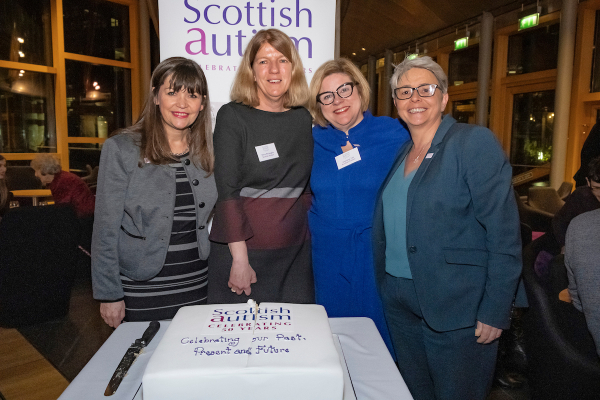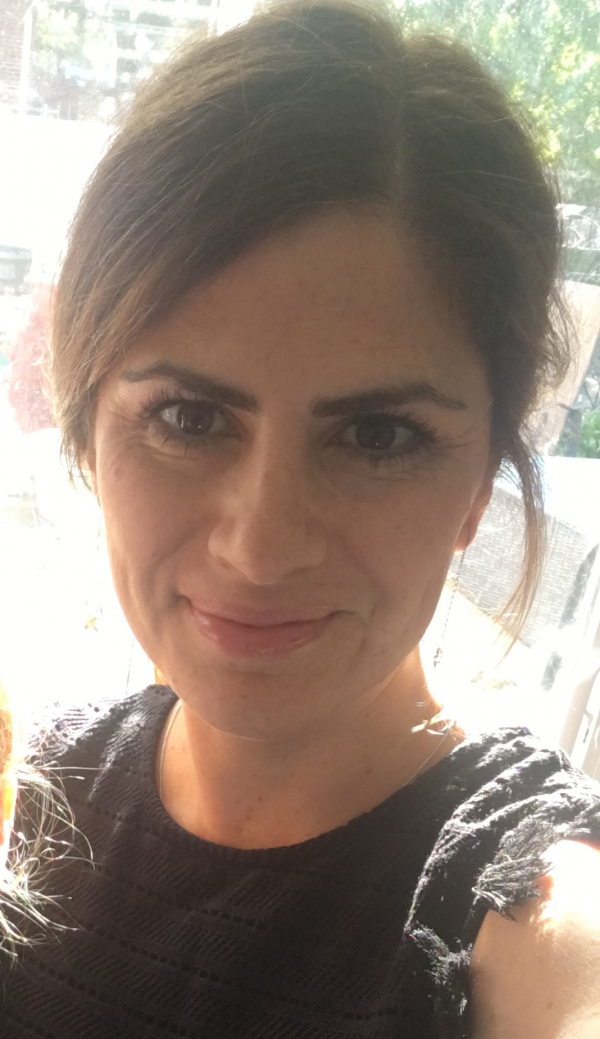From Interprofessionalism to Transprofessionalism - A Bridge to Innovative Practice in Autism?
Jackie Ravet, Senior Lecturer, University of Aberdeen
Interprofessionalism has been a dominant leitmotif in UK health, social and educational policy and legislation for at least two decades. Interprofessionalism is defined as a process of collaboration between two or more professionals across service/discipline boundaries which involves the sharing of knowledge and skillsi. Interprofessionalism is considered integral to good autism practice because autistic people frequently need support from many different services – health, education, social care, etc. In theory, at least, interprofessionalism should enable professionals to ‘learn from each other, learn about each other and learn with each other’ ii in order to enrich practice, foster innovation and improve outcomes for people with autism.
Research indicates that there are significant benefits associated with interprofessional learning e.g. enhanced communication, shared understanding and efficient use of time and fundingiii/iv. Equally, there are many challenges for example - partners may have very different ways of approaching their work, different priorities and use different jargonv. A key barrier can be misuse of power, where individuals use assumed authority or seniority to dominate decision-making. These factors can undermine interprofessionalism, innovation and outcomes.
It might be argued that evolving our practice towards transprofessionalism could ameliorate some of these issuesvi. Transprofessionalism is defined as a process of collaboration between two or more professionals across and beyond professional and discipline boundaries, such that boundaries blur and new synergies flourishi. Arguably, ‘going beyond’ implies a much deeper form of collaboration where professional roles, identities and ways of working are more fluid and differences are transcendedvi. It also implies the inclusion and participation of autistic people, their families and para-professionals who have not traditionally been given a voice within interprofessional decision-making. A flatter power structure is therefore presumed.
Pellicano and Stearsvii propose that autistic people have a right to participation in collaborative decision-making processes because outcomes have direct consequences for their lives. Furthermore, professionals and researchers can benefit considerably from their expertise and insights, increasing the potential for innovation. However, where neurotypical and autistic people are working together, they may encounter the ‘double empathy problem’ i.e. a mutual lack of understanding of each other’s behaviour and intentionsviii that can obfuscate communication. Indeed, Clarkii stresses that interprofessionalism, and by extension, transprofessionalism, is highly complex and essentially relational as it pertains to how people connect and the quality of their interaction.
In the below, I briefly explore four key relational elements associated with transprofessionalism that must be squarely addressed if we are to enhance innovation and improve outcomes in the field of autism:
1. Client-centred: Transprofessionalism, by definition, includes people with autism and strives to be client centred. It is therefore an ethical practice that recognises the rights of the autism community to a ‘voice’ and empowerment, and acknowledges the importance of adapting the collaborative process to enable access to decision-makingvii. Use of augmentative and alternative communication (AAC) e.g. signing, pictures and symbols, etc. may be required to ensure genuine participation across the autism spectrumiv. ‘Power-with’, rather than ‘power-over’, relations are also vital to eradicate inequalities and ensure rich, open collaboration.
2. Teamwork: In the workplace we are continually ‘’encultured’ into particular values, beliefs and ways of beingii. Attitudes to autism and autism discourses are shaped by enculturation. In order to start team building, enculturation must be explicitly surfaced so that ontological and epistemological differences can enrich the collaborative process, rather than undermining it. Sharing, reciprocally, who we/others are and what we/they know is essential to this process (ibid), helping to facilitate knowledge transfer and shared understanding, whilst ameliorating the double empathy problem. Good communication, emotional literacy, conflict resolution and related skills are fundamental to successful teamwork.
3. Risk: Headix suggests that ‘functional’ collaboration is just about getting things done. By contrast, ‘effective’ collaboration is where boundaries are crossed, creative ideas are nurtured and innovation can flourish. However, this will not happen if we approach the transprofessional process superficially, as a tick-box activity. Effective collaboration requires deep personal investment and engagement incorporating ‘intelligent experimentation’x rather than random trial and error. It therefore involves riskvi.
4. Joint Reflection: Two ongoing reflective processes must be active during transprofessionalism: joint reflection on what we are doing and joint reflection on how we are doing it - the relational process. Whilst we may be familiar with the former, the latter is vital if we are to develop appropriate ‘habits’ or ‘dispositions to act’x that embed transprofessionalism in practice over time, establishing it as a professional ‘norm’xi.
Arguably, if we prioritise these four elements within the transprofessional process, collaboration is more likely to be ethical, innovative and effective. However, workforce preparation depends, crucially, on professional ownership and training, as well as leadership, funding and a supportive ethos across professional and academic contexts. More research is vital to develop models of good transprofessional practice and to evaluate their impact on the lives of autistic people.
REFERENCES
i Chiochio & Richer (2015). From multi-professional to trans-professional healthcare teams: The critical role of innovation projects, in Gurtner S., Soyez K. (eds), Challenges & Opportunities in Health Care Management, London: Springer.
ii Clarke (2005). Reflecting on reflection in interprofessional education: Implications for theory and practice, Journal of Interprofessional Care, 23/3, 213-233.
iii Ravet (2012). From Interprofessional Education to Interprofessional Practice: Exploring the implementation gap, Professional Development in Education, 38/1, 49-64.
iv Ravet (2015). Supporting Change in Autism Services: Bridging the gap between theory and practice, London: Routledge.
v Forbes, J. & Watson, C. (eds) (2012). The Transformation of Children’s Services: examining & debating the complexities of inter/professional working, London: Routledge.
vi Ravet & Williams (2017). What We know Now: Education, neuroscience and transdisciplinary autism research, Educational Research, 59/1, 1-16.
vii Pellicano, E., and Stears, M. (2011). Bridging autism, science and society: moving toward an ethically informed approach to autism research. Autism Res. 4, 271–282.
viii Milton, Damian (2012). On the ontological status of autism: the ‘double empathy problem’. Disability & Society, 27 (6). pp. 883-887
ix Head, G. (2003). Effective collaboration: deep collaboration as an essential element of the learning process, Journal of Educational Enquiry, 4/2, 47-62.
x Biesta, G. (2007). Why “what works” won’t work: evidence‐based practice and the democratic deficit in educational research, Educational Theory, 57/1, 1-22.
xi Pickering & Embry, (2013). So Long, Silos, The American Speech-Language-Hearing Association (ASHA) Leader, 18, 38-45.





